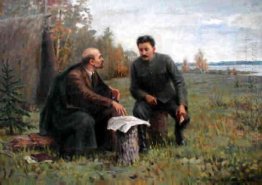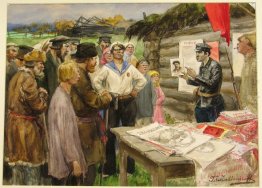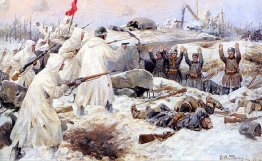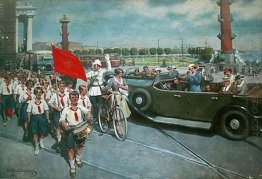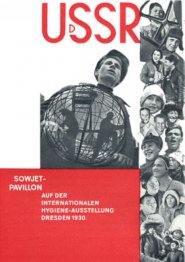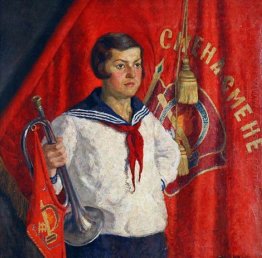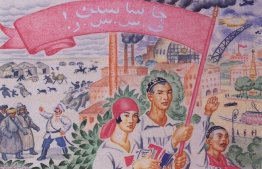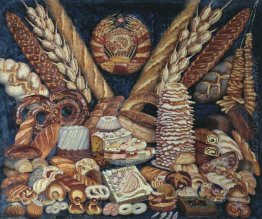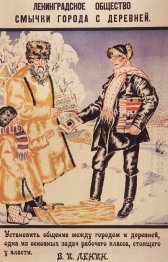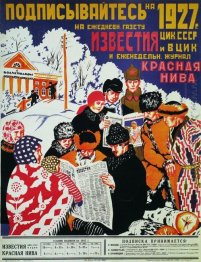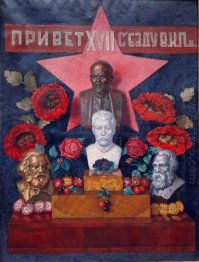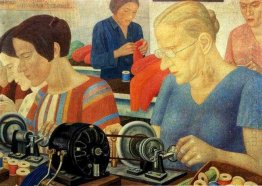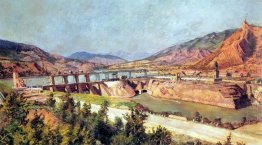Socialist Realism

Socialist Realism is Soviet artistic doctrine, realistic in its nature which has a purpose the furtherance of the goals of socialism and communism. It was institutionalized by Joseph Stalin in 1934, and later by allied Communist parties worldwide. New role of art in Soviet society defined that successful art depicts and glorifies the proletariat"s struggle toward socialist progress. The art produced under socialist realism is realistic, optimistic, and heroic. Its purpose was education in the spirit of socialism. Its practice is marked by strict adherence to party doctrine and to conventional techniques of realism. A similar approach was also enforced for a time in the People"s Republic of China during the rule of Mao Zedong or in Albania during the rule of Enver Hoxha. After the death of Stalin in 1953 some relaxation of strictures was evident. Today, arguably the only country still focused on these aesthetic principles is North Korea.
Socialist Realism has been widely condemned as stifling to artistic values. Czeslaw Milos, writing in the introduction to Sinyavsky"s On Socialist Realism, describes the products of socialist realism as "inferior", ascribing this as necessarily proceeding from the limited view of reality permitted to creative artists.




